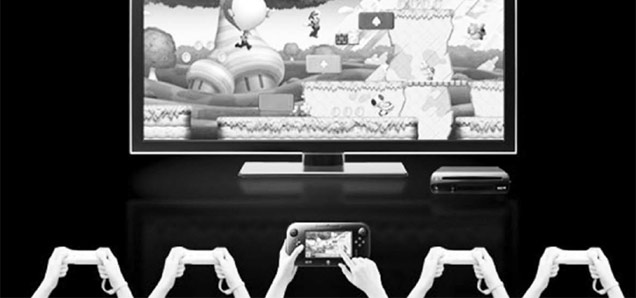G33K LYFE: Does the House of Mario need to rebuild?
 CREDIT: NINTENDO
CREDIT: NINTENDONintendo�s Wii U has been a flop with gamers.
It is a rare occasion that one brand can become so synonymous with its product that the wider public believes that they are one in the same. It is an honour that is reserved for only the most elite companies, like Kleenex or, at least in the eyes of your mom, Nintendo.
It would be nearly impossible to find somebody under 50 who doesn't know the name of that company, and nobody who is reading this column needs me to tell them how crucial the presence of Nintendo has been to the growth of the video game industry from a laughable niche market to the highest-grossing entertainment medium today.
Unfortunately for longtime fans of “the Big N,” the company has found itself in a bit of a sticky situation the last couple of years, one that has no one cause at its root, and consequently no single solution. In simple terms, it has fallen behind the competition, predominantly Sony and Microsoft.
Much of Nintendo's success has been due to its long track record of high quality, family-friendly video games. They have also created some of the most iconic characters that the industry has ever produced, a strategy that propelled them to the top of the video game world throughout the '80s and '90s, when brightly coloured mascot characters were being churned out at the same rate as poorly conceived reality shows. Yet as entertainment as a whole grew a little darker and a little more edgy, the adventures of Mario and Link took a backseat to the sudden glut of military shooters and adventure games that began dominating the industry in the 2000s.
While Nintendo was able to regain financial success with the launch of the motion-controlled Wii console in 2006, the generation of gamers that grew up with the company felt that they were being ignored in favour of targeting players of all ages — from toddlers to grandparents. Only a handful of titles captured the hearts of longer-term Nintendo fans, and all of them came from the established worlds of Mario, The Legend of Zelda and the usual success of Mario Kart and Super Smash Brothers, which have been staple four-player party games since the heyday of the Nintendo64. Unfortunately, these marvels of gameplay were delivered on a platform that was graphically inferior to both consoles — the PlayStation 3 and the Xbox 360 — it was set to compete against.
The 2012 release of the Wii U was the official launch of the touted “next-gen,” but Nintendo was only just offering the sort of graphics that had been available for nearly a decade. A much more pressing issue, and one that continues to haunt the console a year into its debut, is a serious lack of games that are bringing anything special to the table. The bestselling title on the console is a remake of another Zelda game. The only titles that are truly anticipated in the future of the system are all from the series that I have mentioned above, leaving gamers facing the prospect of dropping $300 on a console that will only ever offer a handful of games.
Recent news that Nintendo has bought back nearly $1 billion in stock hints that they are aware that some sort of new strategy may be required if the Wii U and Nintendo as a whole will be successful in the future. This isn't to say that they're going anywhere — they have more money in the bank than most countries have in their national reserves — but as more time passes and more and more PS4s and Xbox Ones fly off the shelves (both consoles beat the Wii U's first year sales in a couple weeks), it is obvious that something new is coming on the horizon.













